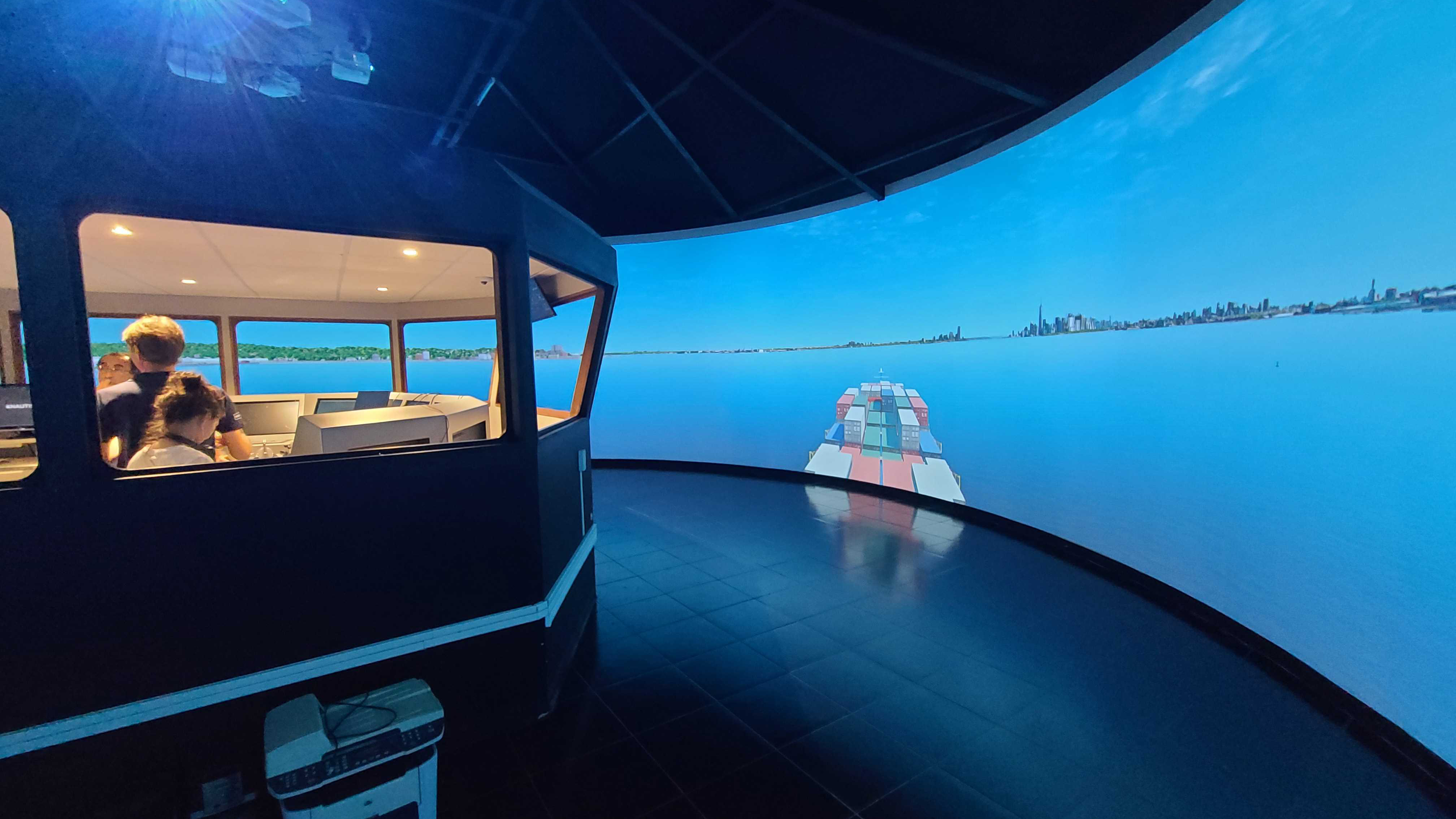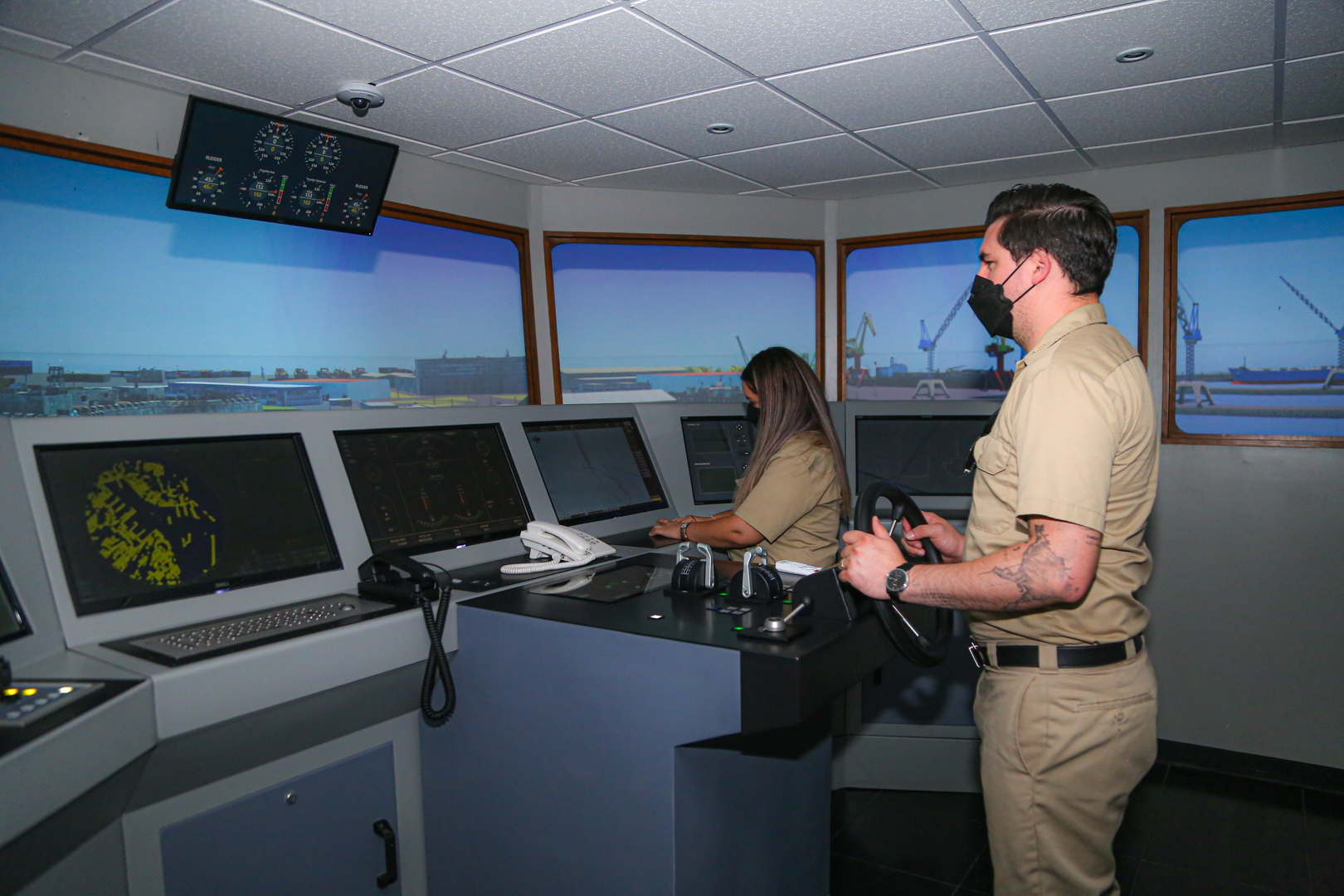
PRANATEC recently selected Scalable Display Technologies for seamless projection in maritime simulators for the Mexican Navy. Specifically, the Scalable Display Manager solution is being used for automatic warping and edge-blending.
As one of Mexico’s two independent armed forces, the Mexican Navy consists of about 68,200 personnel, 180 ships and 130 aircrafts. Given Mexico’s large area of water and extensive coastline, the Mexican Navy’s duties are very important. Its missions include the war on drugs, protecting oil wells and helping people in hurricane relief operations and other natural disasters.
Recently, PRANATEC was selected to provide maritime simulators for the Mexican Navy, the largest armed forces in Latin America. PRANATEC provides high-performance technology for workshops, laboratories, training programs, and other educational and certification programs. With over 15 years of experience in training and simulation, PRANATEC integrates disruptive simulation technologies to train tomorrow’s specialists.
[Welcome to the AV Renaissance]
PRANATEC has partnered with VSTEP Simulation to provide NAUTIS, a software platform that enables learning by simulation in the maritime industry, to the Mexican Navy. The simulators are integrated with the NAUTIS naval task force software module, which includes tactical communications, amphibious landing, replenishment at sea and anti-piracy training.
“Our maritime simulators include projection, 240-degree visualization and a collimated screen,” explained Enrique de la Torre, director of PRANATEC. “Most maritime simulators are designed with screens, but collimation is an essential feature for the Mexican Navy and their training academies because they’ve already adopted the technology; therefore, they required a solution with collimated screens because of their investment and knowledge of the technology. They wanted to continue with projectors, which required a solution to blend multiple projectors into a singular, seamless display.”

PRANATEC integrated Scalable Display Technologies to create a complete simulation solution for warping and blending high-resolution content on collimated screens. Scalable produces groundbreaking software that automatically calibrates images’ color, intensity and geometry from multiple projectors, resulting in a single, seamless digital display.
“We are utilizing five projectors with each simulator,” noted De la Torre. “It requires a lot of time to get the system right; particularly for this application, the visuals must be flawless. Our simulator partner, VSTEP, had recommended that we check out Scalable Display Technologies. Scalable works seamlessly with VSTEP’s NAUTIS platform, simplifying integration and maintenance.
“Scalable Display Manager has allowed us to reduce our calibration to only a few hours. Previously, manually calibrating a simulator would take several days to a week. Scalable’s technology is very straightforward. It requires the initial on-site integration to install the system, but once it’s installed, the entire system is very low maintenance.”
[Running from Fears in Pro AV]
Designed to handle the most demanding applications, Scalable Display Manager can calibrate unlimited projections on any screen geometry. Scalable’s patented algorithms are capable of sub-pixel blend registration and sub-degree geometric uniformity.
“Scalable’s technology incorporates cameras to align the projectors for real-time calibration,” said De la Torre. “It allows us to remotely recalibrate a system and monitor the visual system in real-time. Previously, the maritime academies would communicate with us and try to adjust the projectors. Ultimately, it would require a technician to come on-site to fix the system. It was a long and tedious process. Today, if anything happens with the simulator, we can log in remotely to perform the recalibration. It has allowed us to reduce installation time, eliminate on-site maintenance, and reduce system downtime.”



!["[T]he First and Fifth Amendments Require ICE to Provide Information About the Whereabouts of a Detained Person"](https://images.inkl.com/s3/publisher/cover/212/reason-cover.png?w=600)



